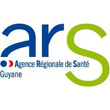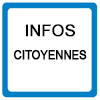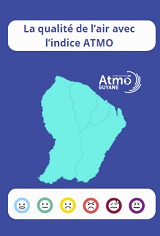Blada.com
samedi 13 décembre
Boîtes aux lettres
Courrier des lecteurs
Petites annonces
Emploi / Formation
Covoiturage
Infos citoyennes
Infos citoyennes
16/06/23
Morsures de serpents : la perspective d’un antivenin guyanais se rapproche
 Des études précliniques sont en cours pour concevoir un antivenin dirigé contre les envenimations par grage petits carreaux, responsable de 80 à 90 % des envenimations ophidiennes en Guyane.
Des études précliniques sont en cours pour concevoir un antivenin dirigé contre les envenimations par grage petits carreaux, responsable de 80 à 90 % des envenimations ophidiennes en Guyane.
Un antivenin guyanais ! Il y a un an, la Lettre pro vous parlait des travaux entamés pour produire un antivenin (immunothérapie antivenimeuse) particulièrement orienté contre le venin de Bothrops atrox, le grage petits carreaux, responsable de 80 à 90 % des envenimations ophidiennes sur le territoire (lire la Lettre pro du 24 mai 2023). Cet antivenin succéderait à Antivipmyn Tri, utilisé depuis 2014 au centre hospitalier de l’ouest guyanais – avec des résultats mitigés – et depuis 2017 à l’hôpital de Cayenne – avec davantage de réussite. Antivipmyn Tri a le désavantage d’être cher – 1 200 euros la dose, 6 000 à 8 000 euros la cure – et d’être fabriqué par immunisation de chevaux par le venin de Bothrops asper, une espèce présente en Amérique centrale.
« Deux projets sont en cours, détaille le Pr Hatem Kallel, chef de pôle urgences – soins critiques au Centre Hospitalier de Cayenne. D’abord une réflexion conjointe menée avec le Pr Christophe Peyrefitte de l’Institut Pasteur de Guyane en collaboration avec les Institut Pasteur de Tunisie, du Maroc et de Grèce, et potentiellement la Fiocruz pour la fabrication d’un antivenin dirigé contre les venins de serpents circulant en Guyane. Et un travail que nous avons démarré avec l’équipe de l’Instituto Clodomiro Picado, Facultad de Microbiología, Universidad de Costa Rica pour la fabrication d’un antivenin bivalent Bothrops atrox et Bothrops lanceolatus. » Le premier est responsable de 80 à 90 % des envenimations ophidiennes en Guyane. Le second, étudié par le Pr Dabor Résière, est à l’origine de l’intégralité des envenimations ophidiennes en Martinique. L’antivenin pourrait aussi être efficace contre Bothrops caribbaeus, son cousin de Sainte-Lucie.
Ces travaux menés avec l’équipe du Pr Jose Maria Guttierez, dont les travaux font référence dans la région, seront réalisés grâce à un financement du Wellcome Trust, une fondation caritative de médecine. « Si nous réussissons à produire cet antivenin, nous éviterons des ruptures d’approvisionnement », anticipe le Pr Kallel. Les économies seront également importantes : la dose pourrait coûter 30 à 35 euros, contre plus de 1 000 euros pour Antivipmyn Tri. « La chaîne de production, le savoir-faire et les financements sont là », souligne le Pr Kallel, qui espère des résultats dans le courant de l’année prochaine.
D’ici-là, de nouvelles collectes de venin doivent être réalisées. Des études précliniques et des expérimentations sur l’animal doivent être menées. Deux étudiantes en cotutelle Université de Sfax (Tunisie) et Université de Guyane travaillent sur ce sujet, avec le Pr Ibtissem Ben Amara. D’autres travaux, réalisés avec le Pr Abderraouf Hilali (Université de Settat, Maroc). Tous ces travaux portent sur la voie d’administration de l’antivenin dans les études animales et sur la différence de réponse immunitaire en fonction du genre. « C’est la première fois que c’est étudié dans le monde, souligne le Pr Kallel. Nous avons trouvé une susceptibilité plus forte de l’animal de sexe masculin à l’envenimation. L’animal de sexe féminin a une défense immuno-inflammatoire supérieure en cas d’infection ou d’envenimation. »
« Nous avons également travaillé sur un modèle innovant de reproduction des effets toxique du venin sur les vaisseaux sanguins, avec le service d’anatomo-pathologie du Dr Kinan Drak Alsibai, poursuit-il. Nous avons réussi à voir à partir de quel moment survient la rupture vasculaire et à suivre la cinétique du saignement. Nous pourrons donc tester ce modèle avec le nouvel antivenin pour déterminer son pouvoir neutralisant. Nous pourrons voir également quel est le mode d’administration le plus efficace chez l’homme et chez la femme (…). Avec le Pr Magali Demar et le Dr Vincent Sainte-Rose, du laboratoire de microbiologie de Cayenne, nous allons également analyser le pouvoir bactéricide du venin. »
Après ces études précliniques, arriveront les études cliniques et les demandes d’autorisation. Le Pr Kallel espère que les autorisations dont bénéficie déjà le laboratoire au Costa Rica et l’Institut Pasteur seront transposables aux nouveaux antivenins : « Les techniques de fabrication seront les mêmes. Nous changerons seulement l’ingrédient et la cible. » Dans le même temps, des rencontres ont eu lieu avec les équipes du CHOG et du Centre Hospitalier de Kourou (CHK) pour établir des protocoles de prise en charge communs et créer une base de données unique des envenimations. Des travaux sont menés aussi avec l’unité des maladies infectieuses et tropicales (UMIT) sur la gestion des antibiotiques chez les patients envenimés. Tous ces travaux, s’ils sont menés à bien rapidement, pourraient déboucher sur la fabrication du premier antivenin guyanais d’ici douze à dix-huit mois.
 Preclinical studies are underway to design an antivenom directed against envenoming by grage small squares, responsible for 80 to 90% of ophidian envenomation in French Guiana.
Preclinical studies are underway to design an antivenom directed against envenoming by grage small squares, responsible for 80 to 90% of ophidian envenomation in French Guiana.
Guyanese antivenom! A year ago, La Lettre pro told you about the work started to produce an antivenom (antivenom immunotherapy) particularly oriented against the venom of Bothrops atrox, small square grate, responsible for 80 to 90% of ophidian envenomations on the territory (read the Pro Letter of May 24 2023). This antivenom would succeed Antivipmyn Tri, used since 2014 at the western French Guiana hospital center – with mixed results – and since 2017 at the Cayenne hospital – with more success. Antivipmyn Tri has the disadvantage of being expensive – 1 200 euros per dose, 6 8 8000 euros per cure – and of being manufactured by immunizing horses with the venom of Bothrops asper, a species present in Central America .
“ Two projects are underway, explains Professor Hatem Kallel, head of the emergency department – critical care at the Center Hospitalier de Cayenne. First, a joint reflection carried out with Pr Christophe Peyrefitte of the Institut Pasteur in Guyana in collaboration with the Institut Pasteur in Tunisia, Morocco and Greece, and potentially Fiocruz for the manufacture of an antivenom directed against the venoms of snakes circulating in Guyana. And a work that we started with the team of the Instituto Clodomiro Picado, Facultad de Microbiología, Universidad de Costa Rica for the manufacture of a bivalent antivenom Bothrops atrox and Bothrops lanceolatus. » The first is responsible for 80 to 90% of ophidian envenomations in Guyana. The second, studied by Prof. Dabor Résière, is the cause of all ophidian envenomation in Martinique. The antivenom may also be effective against Bothrops caribbaeus, its cousin from Saint Lucia.
This work carried out with the team of Professor Jose Maria Guttierez, whose work is a benchmark in the region, will be carried out with funding from the Wellcome Trust, a charitable medical foundation. "If we succeed in producing this antivenom, we will avoid supply disruptions", anticipates Professor Kallel. The savings will also be significant: the dose could cost 30 to 35 euros, compared to more than 1,000 euros for Antivipmyn Tri. "The production chain, the know-how and the funding are there", underlines Professor Kallel, who hopes for results in the course of next year.
Until then, new Venom collections must be made. Preclinical studies and animal experiments must be carried out. Two co-supervised students from the University of Sfax (Tunisia) and the University of Guyana are working on this subject, with Prof. Ibtissem Ben Amara. Other work, carried out with Pr Abderraouf Hilali (University of Settat, Morocco). All of this work focuses on the route of administration of antivenom in animal studies and the difference in immune response based on gender. “This is the first time it has been studied in the world, underlines Professor Kallel. We found a higher susceptibility of the male animal to envenomation. The female animal has a superior immune-inflammatory defense against infection or envenomation.
" We have also worked on an innovative model for reproducing the toxic effects of venom on blood vessels, with the anatomo-pathology department of Dr. Kinan Drak Alsibai, continues -he. We managed to see when vascular rupture occurs and to follow the kinetics of bleeding. We will therefore be able to test this model with the new antivenom to determine its neutralizing power. We will also be able to see what is the most effective mode of administration in men and in women (…). With Pr Magali Demar and Dr Vincent Sainte-Rose, from the Cayenne microbiology laboratory, we will also analyze the bactericidal power of the venom. »
After these preclinical studies, there will be clinical studies and authorization requests. Professor Kallel hopes that the authorizations already enjoyed by the laboratory in Costa Rica and the Institut Pasteur will be transposable to the new antivenoms: “The manufacturing techniques will be the same. We will only change the ingredient and the target.” At the same time, meetings were held with teams from CHOG and the Kourou Hospital Center (CHK) to establish common management protocols and create a single envenomation database. Work is also being carried out with the Infectious and Tropical Diseases Unit (UMIT) on the management of antibiotics in poisoned patients. All this work, if carried out quickly, could lead to the manufacture of the first Guyanese antivenom within twelve to eighteen months.
Raccourcis


passer une petite annonce

passer une annonce de covoiturage


passer une annonce d’emploi







associations, postez vos actualités

participez au courrier des lecteurs
La Guyane c’est ici
La qualité de l’Air avec
ATMO
Photothèque

Lancements 2022
Vol 259 Ariane 5




